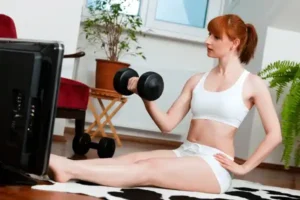Yoga has long been celebrated for its ability to enhance flexibility, strength, and mental clarity. When combined with the rigorous demands of baseball, it can be a game-changer. Baseball yoga is not just a trend; it’s a strategic approach to improving performance and preventing injuries. This guide delves into the myriad benefits of integrating yoga into a baseball training regimen, offering detailed insights and practical tips for players at all levels.
Table of Contents
ToggleBenefits of Baseball Yoga
Physical Benefits
Baseball yoga offers a plethora of physical advantages that can significantly enhance a player’s performance on the field.
• Improved Flexibility: Yoga stretches to target key muscle groups, increasing flexibility and range of motion. This is crucial for baseball players who need to perform dynamic movements such as pitching, batting, and fielding.
• Enhanced Strength: Many yoga poses build core strength, which is essential for stability and power in baseball. Strong core muscles support better posture and reduce the risk of injuries.
• Better Balance and Coordination: Yoga improves proprioception, the body’s ability to sense its position in space. This heightened awareness translates to better balance and coordination, essential for executing precise movements on the field.
• Injury Prevention: Regular yoga practice helps in identifying and addressing muscle imbalances, reducing the likelihood of strains and sprains. It also promotes quicker recovery from minor injuries.
Mental Benefits
The mental aspect of baseball is as critical as the physical. Yoga offers several mental benefits that can give players a competitive edge.
• Increased Focus and Concentration: Yoga practices such as meditation and breath control enhance mental clarity and focus. This is particularly beneficial during high-pressure situations in a game.
• Stress Reduction: The calming effects of yoga help in managing stress and anxiety, common among athletes. A relaxed mind leads to better decision-making and performance.
• Enhanced Mental Resilience: Yoga teaches mindfulness and the ability to stay present, which can improve a player’s mental toughness. This resilience is crucial for bouncing back from setbacks and maintaining a positive attitude.
Key Poses for Baseball Players
Warm-Up Poses
Warming up is essential to prepare the body for the physical demands of baseball. Incorporating yoga into the warm-up routine can be highly effective.
Dynamic Stretches
Dynamic stretches involve active movements that help increase blood flow and muscle temperature.
• Sun Salutations: This sequence of poses warms up the entire body, enhancing flexibility and strength. It includes forward bends, lunges, and upward stretches.
• Leg Swings: Standing on one leg, swing the other leg forward and backward. This dynamic stretch targets the hip flexors and hamstrings, crucial for running and batting.
Static Stretches
Static stretches involve holding a position for a period, allowing muscles to lengthen and relax.
• Standing Forward Bend: This pose stretches the hamstrings, calves, and lower back. Hold for 30 seconds to a minute, breathing deeply.
• Seated Spinal Twist: Sit with legs extended, bend one knee, and twist the torso towards the bent knee. This stretch targets the spine and obliques, enhancing rotational flexibility.
Strengthening Poses
Strength is a cornerstone of athletic performance. Yoga offers several poses that build muscle strength without the need for weights.
Core Strength
A strong core is vital for stability and power in baseball.
• Plank Pose: This pose engages the entire core, including the abs, obliques, and lower back. Hold for 30 seconds to a minute, ensuring proper alignment.
• Boat Pose: Sit on the floor, lift your legs and torso to form a V shape. This pose targets the abs and hip flexors, essential for explosive movements.
Lower Body Strength
Strong legs are crucial for running, jumping, and maintaining balance.
• Warrior II: This pose strengthens the legs, glutes, and core. Hold for 30 seconds on each side, focusing on proper alignment and deep breathing.
• Chair Pose: Stand with feet together, bend the knees, and lower the hips as if sitting in a chair. This pose targets the quads, hamstrings, and glutes.
Flexibility Poses
Flexibility is key to preventing injuries and enhancing performance. Yoga offers several poses that improve flexibility in critical areas.
Hamstring Flexibility
Tight hamstrings can limit a player’s range of motion and increase the risk of injury.
• Standing Forward Bend: This pose stretches the hamstrings and lower back. Hold for 30 seconds to a minute, breathing deeply.
• Reclining Hand-to-Big-Toe Pose: Lie on your back, lift one leg, and hold the big toe with your hand. This pose provides a deep stretch for the hamstrings.
Shoulder Flexibility
Flexible shoulders are essential for throwing and batting.
• Cow Face Pose: Sit with legs crossed, reach one arm over the shoulder and the other behind the back, clasping the hands. This pose stretches the shoulders and triceps.
• Thread the Needle: On all fours, slide one arm under the body, resting the shoulder on the floor. This pose targets the shoulders and upper back.
Recovery Poses
Recovery is a critical aspect of any training regimen. Yoga offers several poses that aid in recovery and prevent injuries.
Post-Game Recovery
Post-game recovery poses help in relaxing the muscles and reducing soreness.
• Child’s Pose: This pose relaxes the back, shoulders, and hips. Hold for a minute or longer, focusing on deep breathing.
• Legs Up the Wall: Lie on your back with legs extended up a wall. This pose promotes circulation and reduces swelling in the legs.
Injury Prevention
Regular yoga practice can help in identifying and addressing muscle imbalances, reducing the risk of injuries.
• Pigeon Pose: This pose stretches the hips and glutes, areas prone to tightness in baseball players. Hold for 30 seconds to a minute on each side.
• Cat-Cow Stretch: On all fours, alternate between arching and rounding the back. This dynamic stretch increases spinal flexibility and reduces tension.
Relevant Data Table For The Baseball Yoga:
| Pose Name | Target Area | Benefits | Duration (seconds) |
| Downward Dog | Full Body | Stretches hamstrings, shoulders | 30-60 |
| Warrior II | Legs, Core | Strengthens legs, improves balance | 30-60 |
| Pigeon Pose | Hips, Glutes | Opens hips, relieves tension | 30-60 |
| Child’s Pose | Back, Shoulders | Relaxes back, stretches shoulders | 30-60 |
| Cat-Cow Stretch | Spine, Core | Increases spinal flexibility | 30-60 |
FAQs:
1. What is baseball yoga?
Baseball yoga is a specialized form of yoga tailored to meet the unique needs of baseball players. It combines traditional yoga poses with specific exercises designed to enhance flexibility, strength, and mental focus. The practice aims to improve overall performance on the field while reducing the risk of injuries.
• Flexibility: Baseball yoga includes poses that target key muscle groups used in baseball, such as the shoulders, hips, and hamstrings. Increased flexibility in these areas can lead to better range of motion and more efficient movements.
• Strength: Many yoga poses build core strength, which is essential for stability and power in baseball. A strong core supports better posture and reduces the risk of injuries.
• Mental Focus: Yoga practices such as meditation and breath control enhance mental clarity and focus. This is particularly beneficial during high-pressure situations in a game.
For more detailed information on the biomechanics of baseball yoga, you can refer to Motus Global.
2. How often should baseball players practice yoga?
The frequency of yoga practice can vary depending on the player’s schedule and specific needs. However, incorporating yoga into the routine at least 2-3 times a week can offer substantial benefits.
• Pre-Game: A short yoga session focusing on dynamic stretches can serve as an excellent warm-up before games or practices. This helps in increasing blood flow and muscle temperature, preparing the body for physical activity.
• Post-Game: A longer session focusing on static stretches and relaxation poses can aid in recovery after games. This helps in reducing muscle soreness and promoting quicker recovery.
• Off-Season: During the off-season, players can engage in more intensive yoga sessions to build strength, flexibility, and mental resilience. This prepares the body for the upcoming season and helps in maintaining overall fitness.
For more insights on how yoga can be integrated into a baseball training regimen, you can visit Pease Baseball.
3. Can yoga help prevent injuries in baseball?
Yes, yoga can play a crucial role in injury prevention for baseball players. The practice helps in identifying and addressing muscle imbalances, improving flexibility, and building strength, all of which contribute to reducing the risk of injuries.
• Muscle Imbalances: Regular yoga practice helps in identifying areas of tightness and weakness. Addressing these imbalances can prevent overuse injuries and improve overall performance.
• Flexibility: Increased flexibility reduces the risk of strains and sprains. Yoga poses that target the shoulders, hips, and hamstrings are particularly beneficial for baseball players.
• Strength: Building core and lower body strength through yoga can enhance stability and power, reducing the likelihood of injuries during dynamic movements.
4. What equipment is needed for baseball yoga?
The beauty of yoga lies in its simplicity. Minimal equipment is required, making it accessible for everyone.
• Yoga Mat: A good-quality yoga mat provides cushioning and grip, essential for performing poses comfortably and safely.
• Yoga Blocks: These can be used to modify poses, making them more accessible for beginners or those with limited flexibility.
• Strap: A yoga strap can assist in deepening stretches and improving flexibility.
• Comfortable Clothing: Wear clothing that allows for a full range of motion and is made of breathable material.
5. Are there any specific yoga poses to avoid for baseball players?
While yoga is generally safe, certain poses may not be suitable for all baseball players, especially those with specific injuries or conditions.
• Deep Backbends: Poses like Wheel Pose or Camel Pose can put a lot of strain on the lower back. Players with back issues should approach these poses with caution.
• Inversions: Poses like Headstand or Shoulder Stand can be risky for those with neck or shoulder problems. It’s best to avoid these unless you have experience and proper guidance.
• Extreme Twists: Deep twisting poses can strain the spine and should be avoided by players with back issues.
Conclusion:
Integrating yoga into a baseball training regimen can offer numerous physical and mental benefits, from improved flexibility and strength to enhanced focus and injury prevention. By incorporating key poses and understanding their benefits, baseball players can optimize their performance and overall well-being.
Posts References:
Biomechanics of Yoga and Baseball, Part One – Motus Global
Yoga – Pease Baseball Professionals






